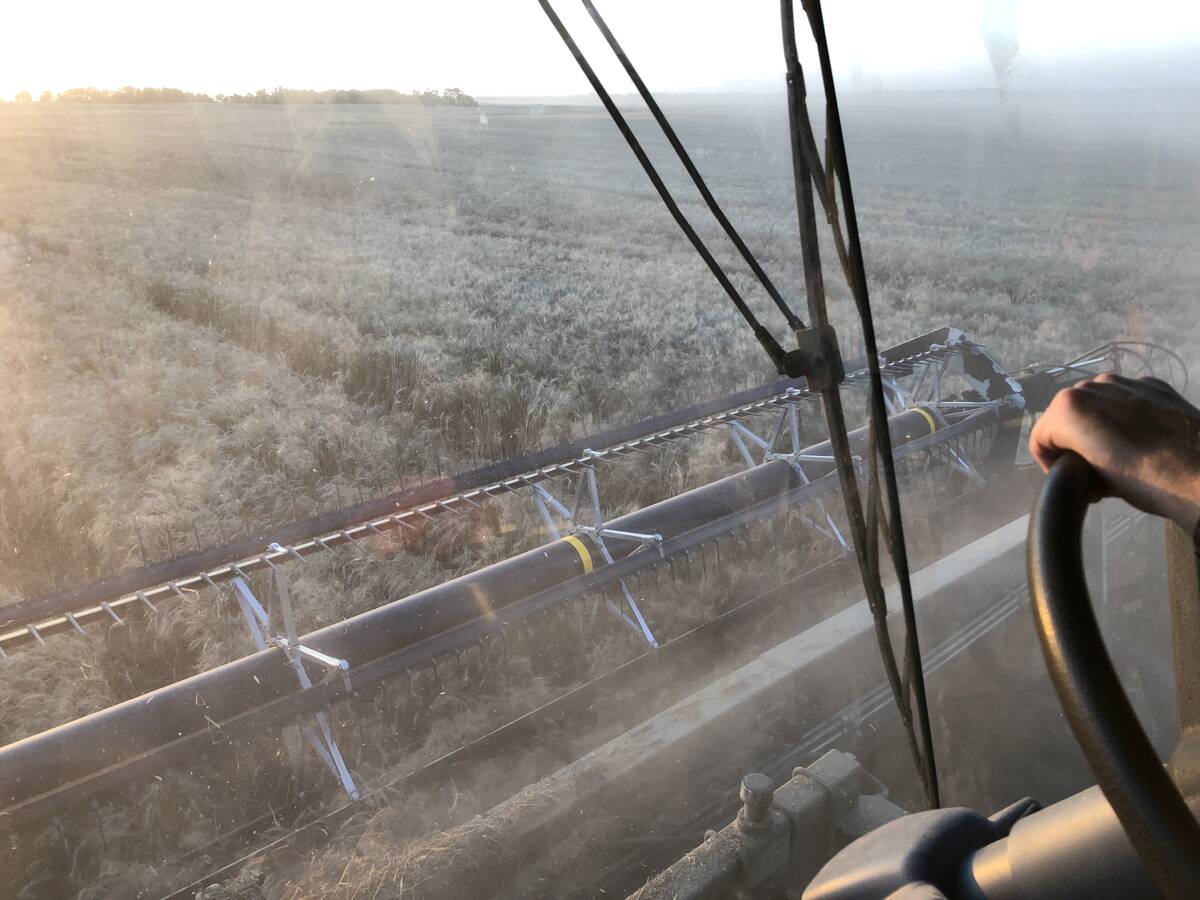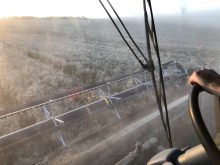Prices over a period of time are typically confined to a trading range. Prices are content to move up and down within this range until there is a shift in equilibrium, at which time the trend will turn decisively in the direction of the breakout from the range.
Trendlines
During the course of a trend and all the fluctuations which compose it, there’s a tendency for prices to follow a sloping or horizontal straight-line path. Prices are often contained between a line of resistance and a line of support.
Read Also

Mail strike disrupts grain sample delivery
The Canadian Grain Commission has asked farmers to consider delivering harvest samples directly to CGC offices, services centres or approved drop offs as Canada Post strike delays mail.
A line of resistance is determined by drawing a line across the highs of the reactions. For a trendline to be both valid and reliable there should be at least three points of price contact — illustrated as A, B and C in the accompanying chart. (AGCanada.com readers can view the chart here.) Each point coincides with the high of a market reaction.
A line of support is determined by drawing a line across the lows. In this example points 1, 2 and 3 coincide with the low of a market reaction.
Once a trading range evolves between two properly constructed lines, it has a high tendency to persist. Thus, a trendline may be challenged several times by the fluctuating market without being penetrated. The longer the trendline remains intact, the more significant the eventual penetration becomes as an indicator of trend change. However, a price violation of the line is not enough basis to conclude that the trend has turned. At the very least, the market must close decisively beyond the line.
Market psychology: Support and resistance areas evolve because equilibrium is reached between buyers and sellers. Trading in a congestion area, the market attracts buying around the bottom of the range and selling in the top portion.
If prices break down through the lower boundary, then all recent buyers are holding losing positions. Consequently, the offering of contracts for sale increases as longs liquidate and shorts, who sold in the upper portion of the trading range, add to their profitable positions.
Conversely, if the price consolidation is resolved by an upside breakout, expect increased buying from longs wishing to add to positions acquired near the bottom of the trading range, as well as from shorts who, having sold in the upper portion of the range, are seeking to cut their losses.
The concepts of support and resistance are among the most interesting facets of chart study because they can help one formulate expectations of future price action.
Two-week reversal
The two-week reversal indicates a change in price direction. (See chart.) On the first week (at a high) the market advances and closes very strong near the high of the week. The following week, prices open unchanged to slightly higher but cannot make additional upside progress. Quantity selling appears early in the week to stymie the advance and prices begin to erode. By week’s end, the market drops to around the preceding week’s lows and closes at or near that level.
Market psychology: The two-week reversal signifies a turn in sentiment. On the first week the longs are comfortable and confident. The market’s performance provides encouragement and reinforces the expectation of greater profits. The second week’s activity is psychologically damaging. It is a complete turnaround from the preceding week and serves to shake the confidence of many who are still long the market. The immediate outlook for prices is abruptly put in question. Longs respond to weakening prices by exiting the market.
This analysis indicates meal prices will break down below the horizontal line of support on this weekly chart.













